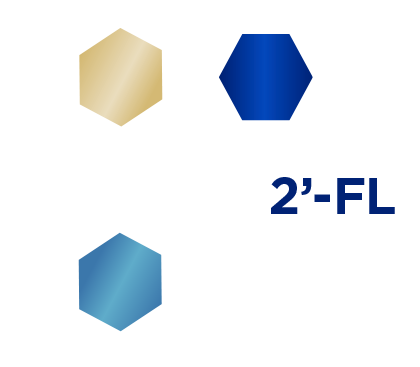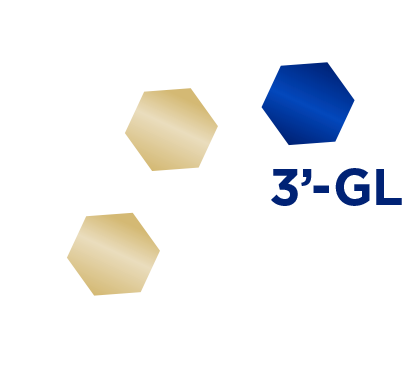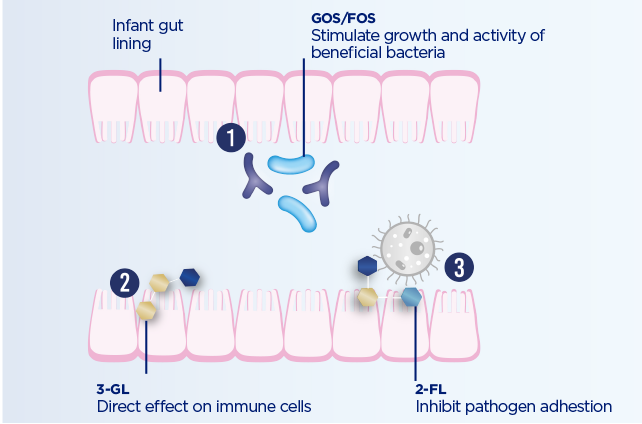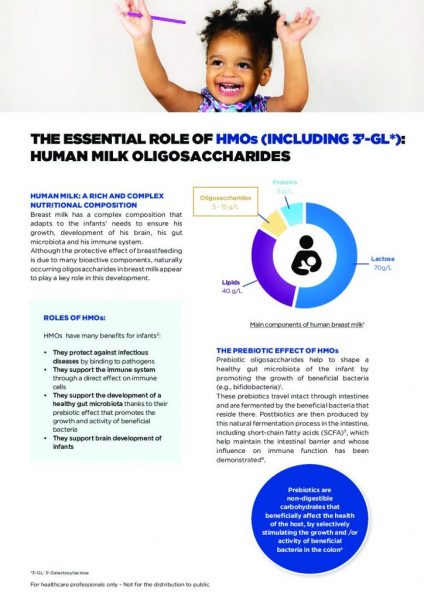There are over 1,000 structurally diverse oligosaccharides present in breast milk.
3’-Galactosyllactose and 2’-Fucosyllactose are two that play an essential role when it comes to pathogens and immune cells.
Human milk is the best source of nutrition for infants. It provides a complex, diverse mix of nutritional and bioactive compounds and includes an optimal balance of nutrients and other components that are specifically tailored to the infant’s needs. Human milk also contains a number of Human Milk Oligosaccharides (HMOs), one example of naturally occurring prebiotics.
More than 1,000 structurally diverse oligosaccharides are present in breast milk2, with around 200 identified so far1, including 3’-Galactosyllactose(3’-GL)3 and 2’-Fucosyllactose (2’FL)4.

It is known to inhibits pathogen adhesion4

It is known to have a direct effect on immune cells3

2’-FL exhibits anti-adhesive, prebiotic and anti-inflammatory activities4, 3-GL promotes mutualistic harmony between the incipient microbiota and its human host through direct inhibition of inflammation3.

*scGOS/lcFOS: short chain galacto-oligosaccharides / long chain fructo-oligosaccharides

Publication: The essential role of 2’-FL and 3’-GL: human milk oligosaccharides
References
- Zivkovic, Angela M., et al. “Human milk glycobiome and its impact on the infant gastrointestinal microbiota.” Proceedings of the National Academy of Sciences 108.Supplement 1 (2011): 4653-4658.
- Oozeer, Raish, et al. “Intestinal microbiology in early life: specific prebiotics can have similar functionalities as human-milk oligosaccharides.” The American journal of clinical nutrition 98.2 (2013): 561S-571S.
- Newburg, David S., et al. “Human milk oligosaccharides and synthetic galactosyloligosaccharides contain 3′-, 4-, and 6′-galactosyllactose and attenuate inflammation in human T84, NCM-460, and H4 cells and intestinal tissue ex vivo.” The Journal of nutrition 146.2 (2015): 358-367.
- Yu, Zhuo-Teng, N. Nanda Nanthakumar, and David S. Newburg. “The human milk oligosaccharide 2′-fucosyllactose quenches campylobacter jejuni–induced inflammation in human epithelial cells HEp-2 and HT-29 and in mouse intestinal mucosa.” The Journal of nutrition 146.10 (2016): 1980-1990.
BA19-485
